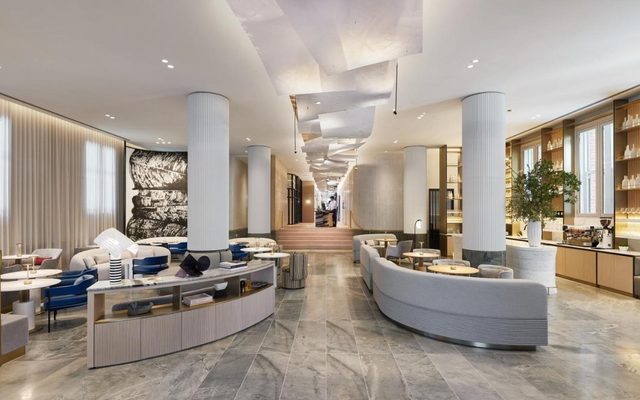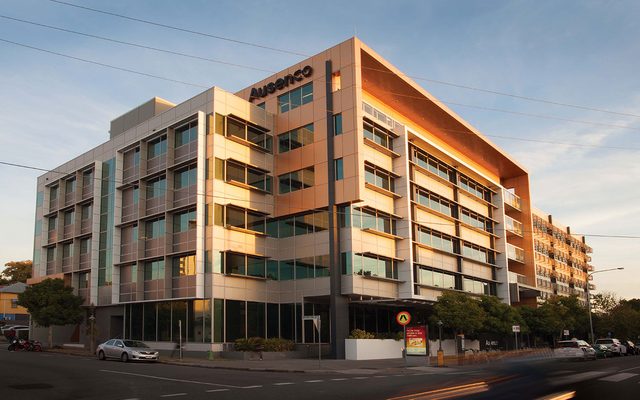This article is from the Australian Property Journal archive
THE Brisbane prime office market is forecast to achieve a 16.5% rental growth over the next three years to 2020 – making it the second best performing city in Asia Pacific, and outperforming Melbourne and Sydney, according to Knight Frank.
Knight Frank’s annual Global Cities 2018 report said Brisbane will be in second place, behind Manila which is predicted to record a 19.1% growth.
Brisbane will outshine Melbourne, placed ninth with forecast growth of 7.4% and Sydney in 10th place with 5.8% growth.
Head of office leasing David Howson said Brisbane’s strong performance is due to the city entering the early stages of growth, whilst Sydney and Melbourne have been in this strong growth phase for the past few years.
Director of research Michelle Ciesielski said modest but steady improvements to the leasing market are now confirmed for Brisbane’s CBD, with prime net effective rents forecast to sit at 6% higher by the end of 2017 than one year ago. This was due to both face rent improvement and slight incentive erosion.
“Tenant activity in Brisbane is expected to remain at improved levels during the remainder of 2017, with the quantum of deals mostly coming from tenants requiring sub-500 sqm,” she added.
QLD joint head of office leasing Campbell Tait said the Brisbane CBD leasing market has continued to demonstrate that it has turned the corner, although much of this improvement is limited to the prime market.
“With the only new prime supply for 2017 understood to be largely – if not fully – committed, this reduction in prime vacancy is expected to continue,” he added,
Joint head of office leasing Mark McCann said the formalisation of a number of major tenant requirements such as Suncorp and ATO, along with the expectation that the state government will continue to upgrade, is bringing more confidence into the market.
“The improving confidence in prime market demand has triggered growth in prime rents. This is a welcome return to effective rental growth after rents fell between 2013 and early 2016, before drifting for much of 2016.
“Going forward, prime rents are expected to maintain a steady appreciation over the next three years, despite the overall vacancy remaining high. Demand for prime space will continue to grow, with upgrading and consolidation remaining drivers for tenants to relocate,” McCann.
Meanwhile Ciesielski said that employment and population growth is having a significant impact on office rental growth in Melbourne’s CBD.
“Much of the Victorian employment growth is supported by the rapidly-growing population. Victoria continues to be Australia’s fastest-growing state, with an additional 2,000 residents entering the state each week. Major employment growth was recorded in the education, government, retail trade, healthcare and professional services sectors,” she said.
Ciesielski said that on the back of positive tenant demand and vacancy falling to its lowest level in four years, average prime rents grew at their strongest rate since 2011.
“In the 12 months to July 2017, average prime net effective rents increased by 8% to $402 per sqm – an historic high in Melbourne’s CBD,” Ciesielski said.
Victorian head of office leasing Hamish Sutherland said in Melbourne’s CBD, demand for office space from education-based tenants has continued to gain momentum in 2017. Over the past 12 months, education-based tenants include Acknowledge Education relocating from 252 Lygon St, Carlton to 3,772 sqm at 168 Exhibition St and Melbourne University taking about 6,458 sqm at 333 Exhibition St.
Sutherland said growth in the co-working industry has also gathered significant momentum over the past 12 months.
“We anticipate overall vacancy rate in the Melbourne CBD to continue trending down over the next 12 months, falling to 4.1% by mid-2018 from the current rate of 6.5% to July 2017,” he predicted.
In Sydney, net absorption is expected to be lower due to the lack of available space and rising effective rents.
Ciesielski said the prime vacancy rate is forecast to fall below 4% over the next two years.
“Beyond 2019, we expect the overall vacancy rate to revert to its historical long-term average, which is around 7%, from 2019 through to 2022 – corresponding to the gradual increase in supply.
“In Sydney’s prime office market, net effective rents are expected to rise by 5.4% in 2018, then remain steady to total 5.8% growth by the end of 2020,” she continued.
NSW head of office leasing Aaron Weir said the technology, advertising, media and information (TAMI) sector was the major driver of leasing activity in the prime market over the last six months.
“Significant TAMI tenant moves include advertising firm WPP AUNZ taking up 6,453 sqm at 30 The Bond and shared workspace operator WeWork moving into its new location across 4,295 sqm at the brand-new 333 George St building, which was fully occupied upon completion.
“Additionally, fintech software supplier IRESS Market has moved into 3,433 sqm at 10 Shelly St, joining Suncorp to bring the recently-refurbished building to full occupancy,”
Weir said that looking ahead, positive effective rental growth is expected to be maintained over the next two years in the Sydney CBD market as demand will outstrip net supply and vacancy continues to trend below equilibrium.
| Prime rents forecast 2017 – 2020 (year-end) | ||
| Ranking | City | % growth |
| 1 | Manila | 19.1% |
| 2 | Brisbane | 16.5% |
| 3 | Singapore | 15.8% |
| 4 | Bangkok | 11.4% |
| 5 | Hong Kong | 10.0% |
| 6 | Bengaluru | 8.7% |
| 7 | Seoul | 8.1% |
| 8 | Mumbai | 7.7% |
| 9 | Melbourne | 7.4% |
| 10 | Sydney | 5.8% |
| 11 | New Delhi | 4.6% |
| 12 | Kuala Lumpur | 2.5% |
| 13 | Tokyo | 1.8% |
| 14 | Shanghai | -0.2% |
| 15 | Beijing | -0.3% |
| Source: Knight Frank, Sumitomo Mitsui Trust Research Institute | ||
Australian Property Journal


















